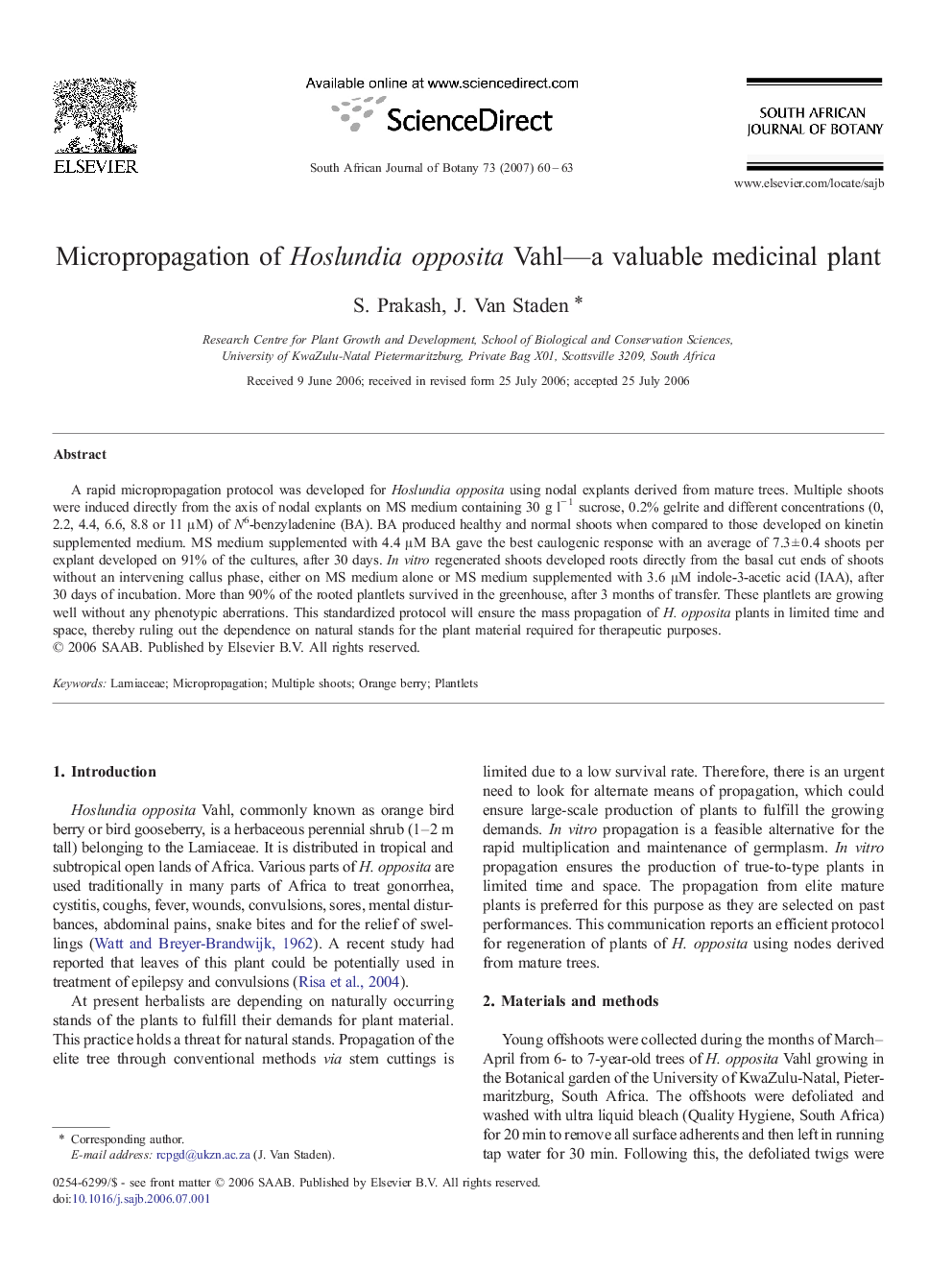| Article ID | Journal | Published Year | Pages | File Type |
|---|---|---|---|---|
| 4521763 | South African Journal of Botany | 2007 | 4 Pages |
A rapid micropropagation protocol was developed for Hoslundia opposita using nodal explants derived from mature trees. Multiple shoots were induced directly from the axis of nodal explants on MS medium containing 30 g l− 1 sucrose, 0.2% gelrite and different concentrations (0, 2.2, 4.4, 6.6, 8.8 or 11 μM) of N6-benzyladenine (BA). BA produced healthy and normal shoots when compared to those developed on kinetin supplemented medium. MS medium supplemented with 4.4 μM BA gave the best caulogenic response with an average of 7.3 ± 0.4 shoots per explant developed on 91% of the cultures, after 30 days. In vitro regenerated shoots developed roots directly from the basal cut ends of shoots without an intervening callus phase, either on MS medium alone or MS medium supplemented with 3.6 μM indole-3-acetic acid (IAA), after 30 days of incubation. More than 90% of the rooted plantlets survived in the greenhouse, after 3 months of transfer. These plantlets are growing well without any phenotypic aberrations. This standardized protocol will ensure the mass propagation of H. opposita plants in limited time and space, thereby ruling out the dependence on natural stands for the plant material required for therapeutic purposes.
